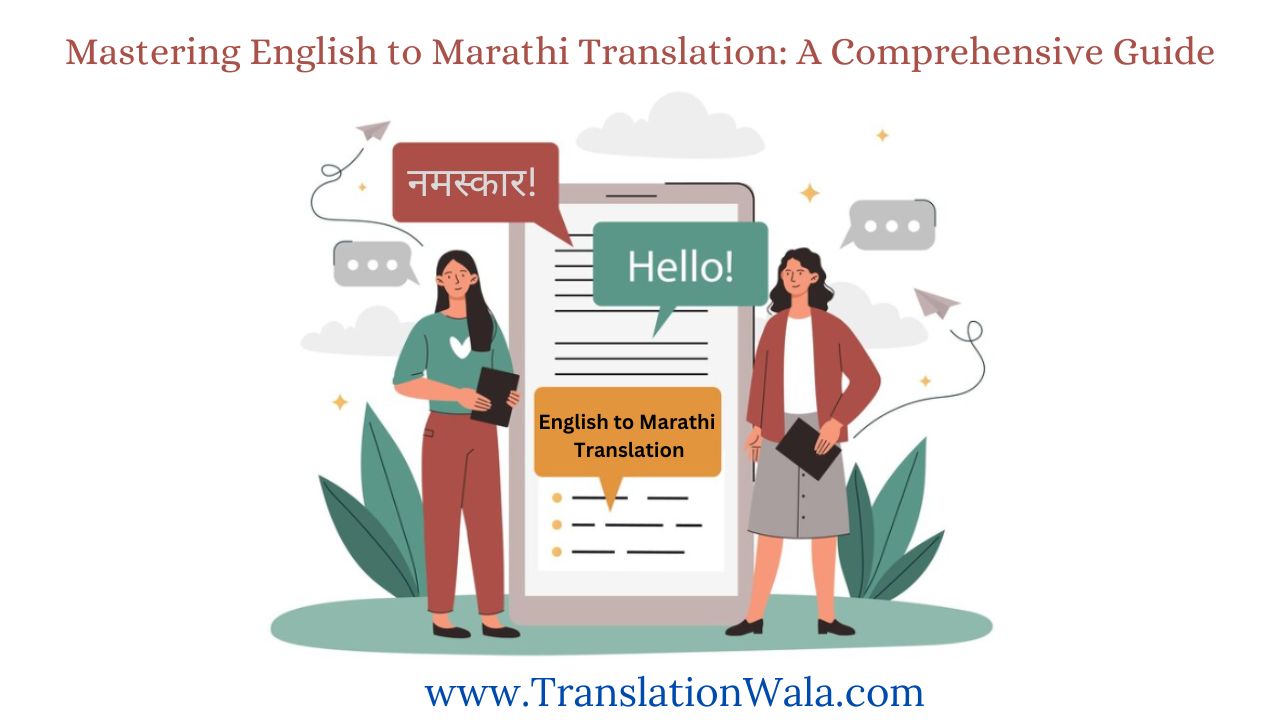Millions of people all over the Indian subcontinent speak Marathi, the lively language of Maharashtra. English to Marathi Translation requires both language skills and cultural awareness because the language has a rich literature history and its own unique cultural traits. This book gives you the information and tips you need to get around in this fascinating world, whether you’re a professional translator, a language lover, or someone who just wants to connect people from different countries.
Demystifying the Challenges:
- Linguistic Differences: English is a Germanic language, so its grammar and words are different from Marathi’s, which has Indo-Aryan roots. This makes it hard to put words in the right order, arrange sentences, and change the form of verbs.
- Cultural Nuances: It’s not enough to just translate words for words in order to get to the heart of a book. It’s important to understand cultural references, jokes, and idioms so that the original meaning isn’t lost.
- Register and Tone: It is very important to change the voice and tone to fit the crowd. You might need to take a different method with an official paper than with a relaxed chat.
- Technical Terms: Technical words and jargon need to be understood in both English and the language they are being translated into.
Also Read: Joining Hands Across Languages: The Power of English to Malayalam Translation
Building Your Translation Toolkit:
- Mastering the Languages:
- Grammar and Vocabulary: You should buy good English and Marathi language books and dictionaries. Learn both languages by reading, listening, and talking to people who speak them.
- Terminology Resources: Use definitions and glossaries that are relevant to your area, like those for law, medicine, or technology.
- Online Tools: Machine translation tools, such as Google Translate, can help with rough drafts, but you should always check and improve the versions to make sure they are correct and include all the important details.
- Cultural Immersion:
- Literature and Media: Explore Marathi literature, movies, and music to gain a deeper understanding of cultural references and expressions.
- Local Interactions: Talk to people who speak Marathi as their first language to learn slang and everyday language.
- Research and Context: When translating specific material, you should look into the situation and the audience you want to reach to make sure the version fits their culture.
- Sharpening Your Skills:
- Practice: Translate different kinds of writing, like songs and news stories, to improve your skills and build your resume.
- Feedback and Revision: To improve your texts, get comments from local speakers and expert translators.
- Professional Development: You might want to take classes or lessons on translation to improve your skills and learn about the newest tools and methods.
Beyond the Words: The Art of Translation
To become a good English to Marathi Translation, you need more than just technical know-how. You need to care about other people, understand other cultures, and love language. Remember that the goal is not just to copy words, but also to pass on the feelings, ideas, and cultural details of the original text to someone else.
Take on the difficulties, enjoy the unique beauty of each language, and let your versions help people understand each other and share their cultures.
Also Read: Expert Tips and Techniques: Mastering English to Assamese Translation for Effective Communication
Additional Tips:
- Prioritize clarity and truth over taking things literally.
- Use sentence patterns that sound normal when you speak Marathi.
- Carefully check and fix your versions.
- Keep up with the latest fashions and words in both languages.
- Have fun with the process!
If you follow these steps and enjoy the process of learning, you’ll be able to easily handle the world of English to Marathi Translation, bringing the complexity of both languages to life and making links between people from different countries.
